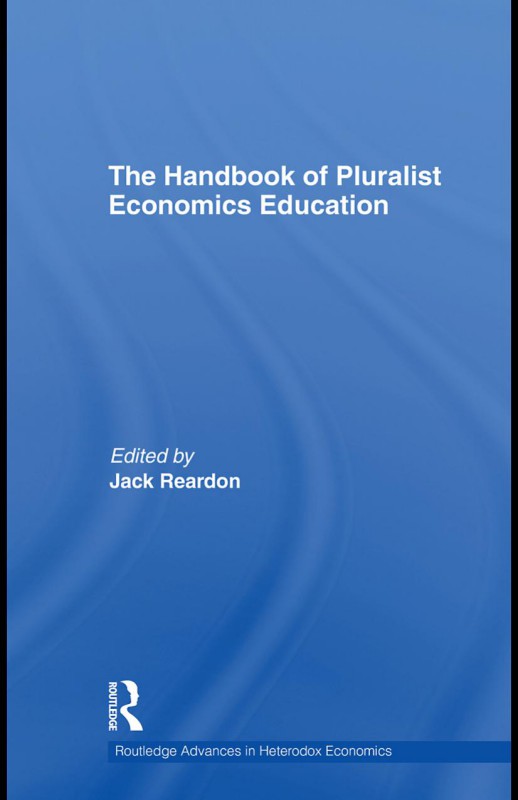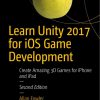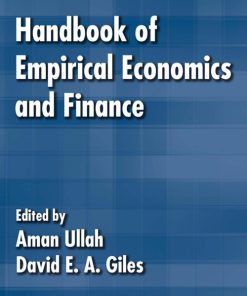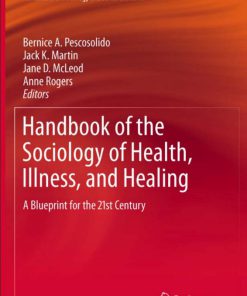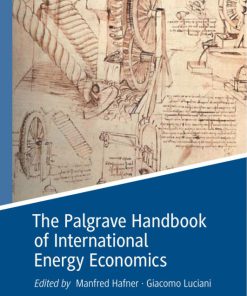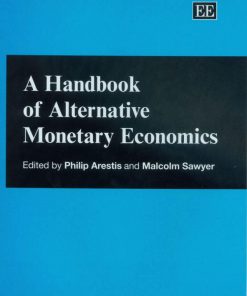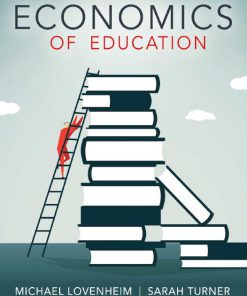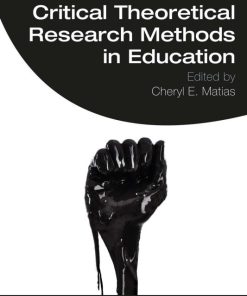The Handbook of Pluralist Economics Education 1st Edition by Reardon Jack 9781135276027 1135276021
$50.00 Original price was: $50.00.$25.00Current price is: $25.00.
Authors:Jack Reardon (edt) , Series:Management [166] , Tags:Economics; Finance; Business & Industry , Author sort:Reardon, Jack , Languages:Languages:eng , Published:Published:Jul 2009 , Publisher:Routledge , Comments:Comments:”S.L.,and Macpherson, McConnell,C.R., Brue, D.A. (2007) Contemporary Labor Economics,8th edn, New York:Irwin McGrawHill. Mankiw,G. (2004) Principles ofEconomics, 3rdedn. Mason,OH: SouthWestern. I.New York: Marx,K.(1967) Capital,Vol. International Publishers. Prasch,R.E. (2004). “HowIs LaborDistinct fromBroccoli?,†in D.P. Champlin andJ.T. Knoedler (eds.),The Institutionalist Traditionin Labor Economics. Armonk,NY: M.E. Sharpe. Ricca …”
The Handbook of Pluralist Economics Education 1st Edition by Reardon Jack – Ebook PDF Instant Download/Delivery.9781135276027,1135276021
Full download The Handbook of Pluralist Economics Education 1st Edition after payment
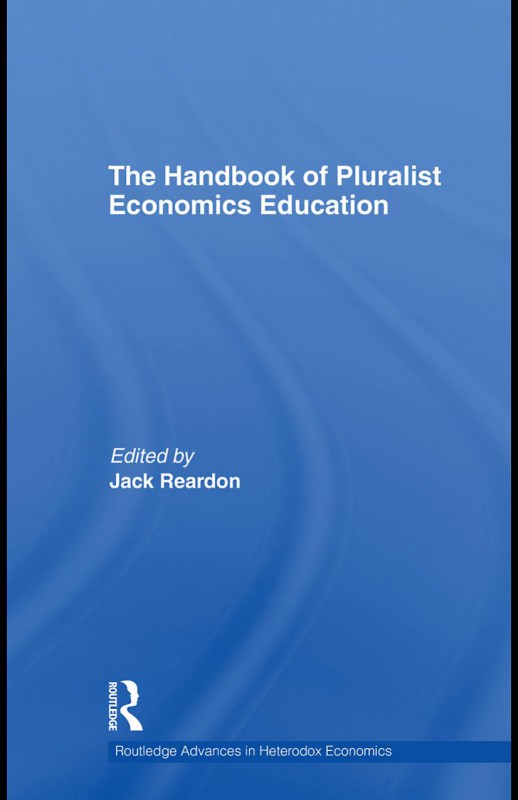
Product details:
ISBN 10:1135276021
ISBN 13:9781135276027
Author: Reardon Jack
This book provides a blueprint for those interested in teaching from a pluralist perspective, regardless of ideology. It provides educators, policy makers and students with helpful suggestions for implementing pluralism into pedagogy, by offering detailed suggestions and guidelines for incorporating pluralist approaches tailored to specific individual courses. The Handbook for Pluralist Economics Education specifically provides practical suggestions for professors willing to implement pluralism in the classroom and increases the pedagogical influence of pluralist economics while reducing the hegemony of monism at any level.
The Handbook of Pluralist Economics Education 1st Table of contents:
Part I The need for pluralism in economics education
1 Introduction and overview1
Outline of the book
I Part I: The need for pluralism in economics education
II Part II: Reclaiming the principles course
III Part III: Core theory courses
IV Part IV: Advanced courses electives
Notes
References
2 The meltdown and economics textbooks
Eleven ways to think like a post-crash economist
References
3 A revolution from the margin
References
4 Why economics needs pluralism
A specious individualism
Perfect competition
About the law of supply and demand
Perfect competition and ideology
About imperfect competition
About game theory
About asymmetry of information
The fallacy of reservation prices
Conclusion
Notes
References
5 History of thought, methodology, and pluralism
The methodology of economics
History of economic thought
Integrating history of thought and methodology into other teaching
Conclusion
Notes
References
Part II Reclaiming the principles course
6 The principles course
Standard course(s)
Considerations in the principles course
Three main approaches
Broader questions
A bigger toolbox: beyond the standard models
A bigger toolbox: beyond the standard methods
Conclusion
Notes
Brief annotated bibliography of classroom materials7
References
7 Teaching economics as if time mattered*
Time matters
The feedback method
A demonstration
Price–demand loop
Price–supply loop
Time delays
The complete model
How to read the model
Behavior of the model
Some pedagogical possibilities
Conclusion
Notes
References
Part III Core theory courses
8 A pluralist approach to intermediate macroeconomics
Macroeconomics for the real economy
Topics for pluralist macroeconomics
Macroeconomic measurement
Social structure and institutions
Pluralist agency
Uncertainty and risk
Unemployment and poverty
Underdevelopment and instability
Endogenous growth and increasing returns
Globalization
Money, finance, and volatility
Macroeconomic policy
Teaching tools
Appendix 1: shape templates (to be enlarged to A3)
Appendix 2: instructions for starting the game
Appendix 3: course outline suggestions
Session 1. Macroeconomic measures
Session 2. Social structures of power and inequality
Session 3. Institutions
Session 4. Pluralist agency
Session 5. The unpaid economy
Session 6. Unemphoyment
Session 7. Poverty
Session 8. Endogenous growth
Session 9. Increasing returns
Session 10. Globalization
Session 11. Trade, global value chains, and MNCs
Session 12. Money
Session 13. Financial markets and instability
Session 14. Macroeconomic policy: challenging the Washington Consensus
Session 15. Macroeconomic policy: the role of the state and civil society
Notes
References
9 A pluralist approach to microeconomics
Testing Marshall
Refuting Marshall
The shape of the market demand curve
From an empty shell to emergent properties
A political economy alternative
Starpower
Just the facts, ma’am
The law of constant marginal product
Dimensionality, habit, and rationality
Elements of a political economy microeconomics
Game theory
Conclusion
Appendix A: market simulation program
Appendix B: true profit-maximizing behavior
Appendix C: differing cost structures
Notes
References
10 Mathematics for pluralist economics
Should political economists use mathematics?
The Circuit School and the need for mathematics
Analytic methods for heterodox economics
Direct entry and numerical simulation of dynamic models
Flowchart models of system dynamics
Multi-agent simulations of complex interactions between heterogeneous populations
Mathematics for heterodox economics
Conclusion: of babies and bathwater
Appendix I: Lorenz’s model
Goodwin’s model
Circuitist model
Notes
References
Part IV Advanced courses/electives
11 Pluralism in labor economics
When you “assume”…
Key labor topics and pluralism
What is labor?
Wage determination
Wage differentials
Labor market structure
Topics of interest
Final thoughts
Notes
References
12 Sustainability economics
Interpretations of sustainable development
Traditional economics is incompatible with sustainable development
Economics is always political economics
Political economic person and political economic organization assumptions
Overview of orthodox and institutional economics
Democracy, sustainability assessment and decision-making
Thinking in non-monetary and positional terms
Key features of positional analysis
From orthodox monism to pluralism
Education for sustainable development
References
13 International economics
Part I: Evolution of the global economy
Part II Financialization and global unbalances in the twenty-first century
Challenges to development
Global unbalances
Social and cultural inequalities
References
14 Money, credit, and finance in political economy
Dynamic circuit of money capital
Endogenous versus exogenous money and credit
Industry–finance contradiction
Financial instability hypothesis
Financial and social structures of accumulation
Global money, payments, and prices
Finance and socio-economic development
Conclusion
Appendix 1: questions and discussion points
Appendix 2: useful journals to aid study and research in political economy money, credit, and finance
Appendix 3: useful references for political economy approaches to money, credit, and finance
Historical and general material
Endogenous v. exogenous money
Financial instability hypothesis
Financial social structure of accumulation
Industry–finance contradiction and financial crises
Government finance and Taxes-Drive-Money
Global money and finance
Finance efficiency and equity
Notes
References
15 Green economics
The core principles of green economics
Green economics and pedagogy
Conclusion
References
Part V Conclusion
16 Conclusion
References
Author index
Subject index
People also search for The Handbook of Pluralist Economics Education 1st :
handbook on the economics of education
the handbook of international higher education
the handbook of educational theories
education and authority in pluralistic society
pluralist theory in economics

